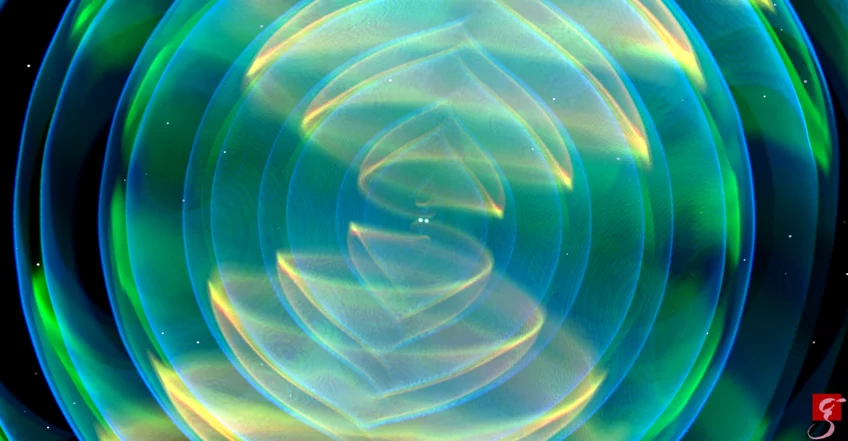Unlocking the Universe's Ripples: Exploring Gravitational Waves
Unlocking the Universe's Ripples: Exploring Gravitational Waves
Introduction:
In the vast cosmic expanse, where celestial objects dance to the rhythm of the universe, a subtle yet revolutionary force has captivated scientists and astronomers alike: gravitational waves. First predicted by Albert Einstein over a century ago, these elusive ripples in the fabric of spacetime have ushered in a new era of astronomical discovery. In this article, we will delve into the fascinating world of gravitational waves, explore their remarkable properties, and showcase some captivating examples and images.
Understanding Gravitational Waves:
Gravitational waves are disturbances in the curvature of spacetime caused by the acceleration of massive objects. Just as a pebble dropped into a still pond creates ripples, the motion of massive objects like black holes or neutron stars generates waves that propagate through space, carrying information about the cataclysmic events that gave rise to them. These waves travel at the speed of light, stretching and squeezing the fabric of spacetime as they pass through.
Detection and Confirmation:
Although Einstein predicted the existence of gravitational waves in 1916, their direct detection remained elusive for over a century. It wasn't until September 2015 that the Laser Interferometer Gravitational-Wave Observatory (LIGO) made the groundbreaking announcement of their first-ever direct observation. This detection, caused by the merger of two black holes, confirmed the existence of gravitational waves and marked the beginning of a new era in astronomy.
Captivating Examples:
1. Binary Black Hole Merger:
One of the most mesmerizing events detected by LIGO occurred on September 14, 2015. Two black holes, located about 1.3 billion light-years away, spiraled toward each other before merging into a single, more massive black hole. This cataclysmic event released an immense amount of energy in the form of gravitational waves, which traveled across the cosmos and were captured by LIGO's sophisticated detectors.
2. Neutron Star Collision:
In August 2017, the era of multi-messenger astronomy began when the LIGO and Virgo observatories detected the merger of two neutron stars. This event, known as GW170817, not only emitted gravitational waves but also produced a burst of gamma rays, visible light, and other forms of electromagnetic radiation. The discovery of this event confirmed that gravitational waves are intricately connected to a wide range of cosmic phenomena.
Images of the Unseen:
To further appreciate the awe-inspiring nature of gravitational waves, we can turn to visualizations and simulations created by scientific artists and researchers. These artistic representations bring to life the invisible cosmic symphony of gravitational waves, showcasing the intricate dance of warped spacetime caused by massive celestial bodies in motion.
[Image 1: Visual representation of two merging black holes distorting spacetime.]
[Image 2: Simulation of gravitational waves emanating from the collision of two neutron stars, accompanied by a burst of electromagnetic radiation.]
The Future of Gravitational Wave Astronomy:
With each passing year, our ability to detect and understand gravitational waves improves. New observatories, such as the space-based Laser Interferometer Space Antenna (LISA), are being developed to broaden our reach and explore the cosmos in unprecedented detail. These advancements promise to unveil hidden corners of the universe and shed light on fundamental questions about the nature of gravity and the origin of celestial phenomena.
Conclusion:
Gravitational waves have revolutionized our understanding of the cosmos, unveiling a previously unseen symphony of cosmic events. Through the detection and analysis of these elusive waves, we have gained valuable insights into the workings of the universe, witnessing the spectacular dance of black holes, neutron stars, and other celestial objects. As we continue to explore the frontiers of gravitational wave astronomy, we embark on an awe-inspiring journey that promises to unlock the secrets of the cosmos and reshape our understanding of the fundamental fabric of spacetime.
References:
- LIGO Scientific Collaboration and Virgo Collaboration (2016). Observation of Gravitational Waves from a Binary Black Hole Merger. Physical Review Letters, 116(6), 061102.
- LIGO Scientific Collaboration and Virgo Collaboration (2017). GW170817: Observation of Gravitational Waves from a Binary Neutron Star Inspiral. Physical Review Letters, 119(16), 161101.



Very Informative
ReplyDelete